A friend recently told me that she always comes up with the perfect comeback. Her problem is that she thinks of it 20 minutes too late. Yep, sometimes timing is everything, especially the timing of Insulin Injections in pets.
When it comes to diabetes care of our pets, timing can make the difference between a well regulated diabetic pet and a “mostly” regulated diabetic pet. Routines may not be exciting, but routines make for a well-regulated diabetic pet! After two plus decades practicing veterinary medicine, I sometimes think I have heard it all. Then a client comes along and proves me wrong. Recently one of my own veterinary clients told me he routinely gave his cat the insulin then waited an hour before feeding his pet. I don’t know where this client got this notion as I had told him what I tell all my clients, to feed and give insulin at the same time every 12 hours.
I also hear from diabetic pet owners all the time about what they do. I often hear that they want to feed a variety of foods so the pet doesn’t get bored with the food. I sometimes hear that a client gives the food and then some period of time before (or sometimes after) will give the insulin. Sometimes folks give the insulin injections at times other than 12 hours apart. I am sometimes surprised at what folks do.
So let’s chat about my preferred order of events for diabetic pets and why:
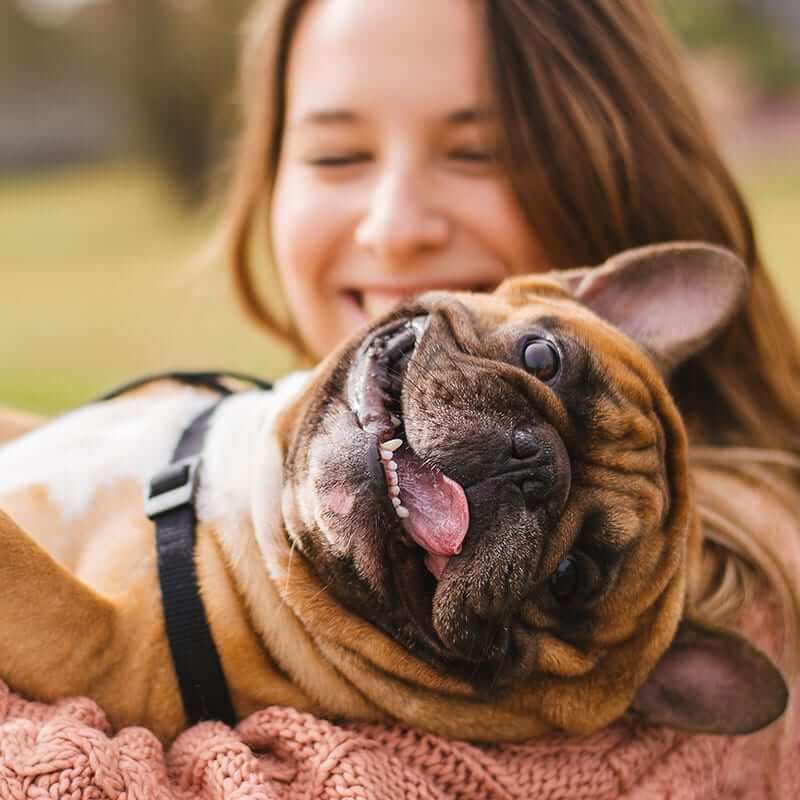
Humans usually ponder what they are going to eat, check their blood glucose, then give themselves a dose of insulin based on their blood glucose level and the type and quantity of food they are about to ingest. Diabetic humans are in control of their actions. And they know how they will likely react to a particular food. Clearly low carb foods will affect the glucose less than a high carb food. They know if they feel hungry before they inject themselves. We hope they make good food choices, but they can and will alter their insulin dose based on those food choices. Humans like variety in their food choices. They are in control of their actions and know if they will eat. They have an opposable digit and give themselves insulin injections. Pets can’t do this.
If we wish to minimize the variability of how much insulin to give, we must give the same diet in the same portion repeatedly to pets. Until pets can figure out how to inject themselves, please don’t change your diabetic pet’s diet on a day to day basis. Yes, pets do like treats and variety, but they would prefer to “feel good” by having good glucose regulation over a variety of foods.
Now, whether one waits to see if Fluffy is eating before giving the injection is another story. For folks who have a pet with a hearty appetite that couldn’t imagine missing a meal, they may give the injection as the pet dives into dinner. A feeding frenzy is definitely a distraction to the quick poke of an insulin needle. For folks who have a finicky eater, they might watch to make sure the pet truly eats before giving the injection. Nonetheless, I would feed the pet essentially at the same time as the injection rather than waiting any length of time. The insulin needs something to work with. If food is not given with the insulin the pet could become hypoglycemic.
How about the timing of meals?
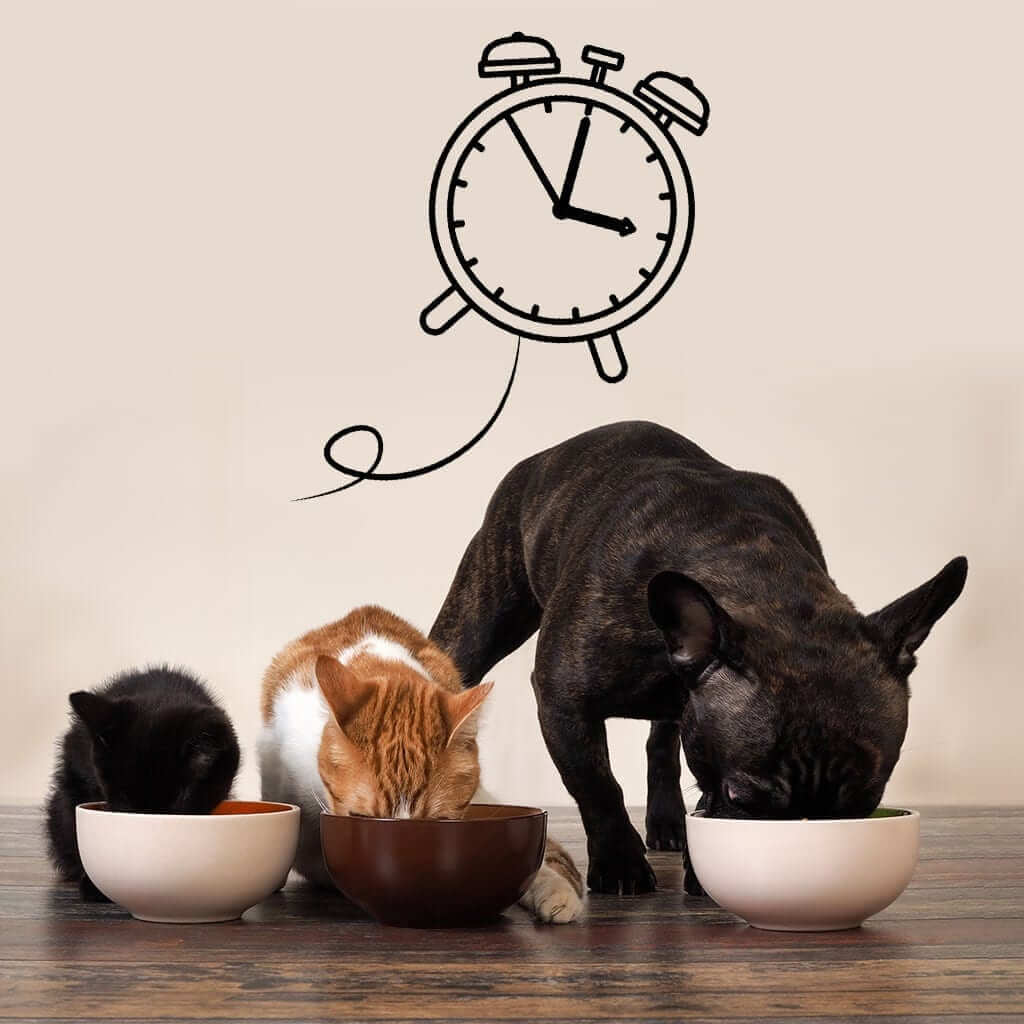
Different Eating Habits Of Diabetic Pet
- Pets can dive into their chow with such gusto you are lucky to get your hand away before setting down the food bowl.
- Some diabetic pets are more finicky about if and how much they will eat.
- A pet can have erratic blood glucose numbers and are more difficult to regulate.
- Hard to manage pets are so difficult that their humans are forced to check a blood glucose every time they fed the pet and adjust the insulin dose based on the appetite.
- The easiest to manage pets are very regular and predictable regarding blood glucose.
- No two diabetic pets are the same.
If I had my way, diabetic dogs and cats would be fed twice a day with their insulin injections. That sounds all very good on paper, but the truth of the matter is that our pets may have a different opinions. Cats especially are notorious for nibbling throughout the day. I joke that in my home pets get the same authority as humans – that it is a “democracy” in the Sutton household. In all honesty, however, the truth is that the cats wear the pants in my family. I have never had a dog boss me around so much as my cats do. If I were to feed my cats a mere two times daily, there would be no end to them telling me about it. My particularly food-motivated cat sometimes looks at the empty food bowl and then looks at me. I’m certain she is thinking, “Human, are you daft?”
My compromise for diabetic pets who think they are constantly starving is to try to get them to eat the majority of their calories at the same time as the insulin injection. For dogs who insist on a mid-day treat, I encourage a low-calorie veggie such as green beans as the snack. For cats, it is the same low-carbohydrate food as they receive as a meal, but hopefully the majority of food is given with the insulin. This stubborn food-nibbling preference of cats is likely why we tend to have greater success with longer-acting insulin for putty tats (i.e. glargine, PZI and demetir). Glargine has a relatively steady action over its duration and has been referred to as a “peak-less” insulin. Most dogs readily accept “meal” feeding twice daily, so we tend to go with intermediate-acting insulin as our first choice, such as Vetsulin and NPH.
If you have a diabetic with a healthy appetite you are lucky! It is a blessing to have a food-motivated diabetic pet compared to a finicky diabetic pet. It makes it much easier to treat the diabetes. It’s easier to predict how much insulin to give. We evaluate the insulin dosage based on periodic blood glucose curves. You probably don’t need to check a glucose before each and every injection once your pet is regulated IF you give equal portions and equal doses of insulin every 12 hours and IF your pet’s glucose is predictable. Of course, you must always use common sense.
Speaking of finicky diabetics, why might a diabetic pet not want to eat?
- Hyperglycemia can cause nausea. If a pet isn’t well regulated, the pet may not be hungry due to nausea. Yes, diabetics are often hungry, but they can be hungry and nauseous at the same time. If I have a diabetic pet patient who isn’t eating well I often send a prescription of Zofran or Cerenia to see if it helps the appetite. Regularity of appetite makes it so much easier to treat a diabetic pet.
- Additionally, pancreatitis is a common cause of diabetes in pets. The pancreas is, afterall, the organ that makes insulin. Pancreatitis causes nausea and abdominal pain. Many diabetic pets have chronic smoldering pancreatitis.
- Diabetic pets are often immunosuppressed. A high blood sugar can affect the function of white blood cells, so infections such as kidney or bladder infections could cause a poor appetite.
The above are discussion points with your vet if your diabetic pet is a finicky eater.
Timing of Insulin Injections: Before or After Meal?
Now, do you give the insulin injection before or after the meal? I typically wait to see if a pet will eat before giving the insulin injection. Again, diabetic humans usually give themselves the insulin a few minutes before they eat. The reason we wait until the diabetic pet is eating before we give insulin is actually pretty obvious: we wish to see if the pet will eat. If we give a pet an insulin injection and then the pet doesn’t eat, hypoglycemia may ensue. For good eaters who are well controlled, I will give the injection as the pet dives into the food bowl. For finicky pets, I’ll check the blood glucose and then decide how much insulin to give, taking into account how much the pet eats.
Life sometimes get is the way of our plans, but do your best to give the injections every 12 hours. Occasionally I hear of clients giving insulin injections 10 and 14 hours apart or 11 and 13 hours apart due to their family’s work and sleep schedule. Strive for 12 hours apart. Consistency is key to diabetes regulation. I encourage consistency of timing of injections and consistency of portions fed. Every family has individual quirks and schedules, but we all do our best for the love of Fluffy.
Have a question or comment? Then post below! I always enjoy hearing from my readers!
NOTE: Consult your veterinarian first to make sure my recommendations fit your pets special health needs.
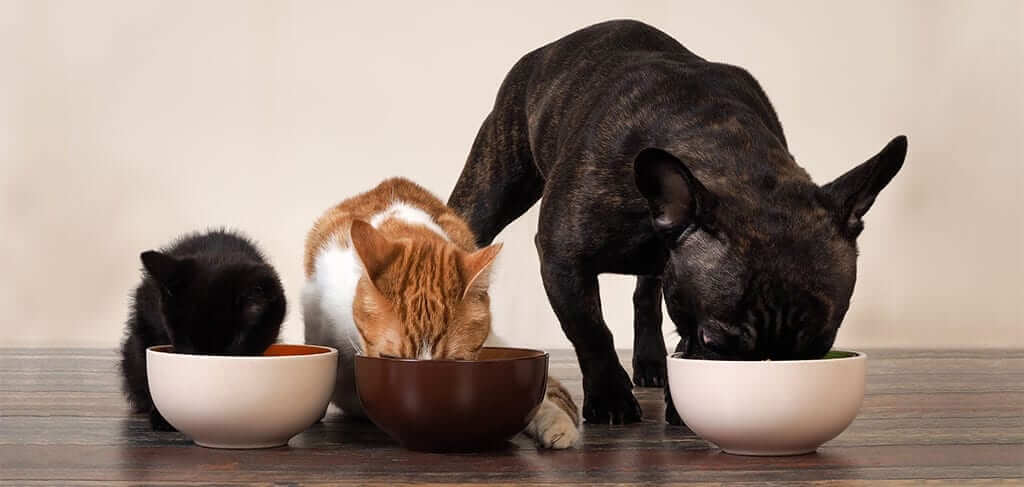
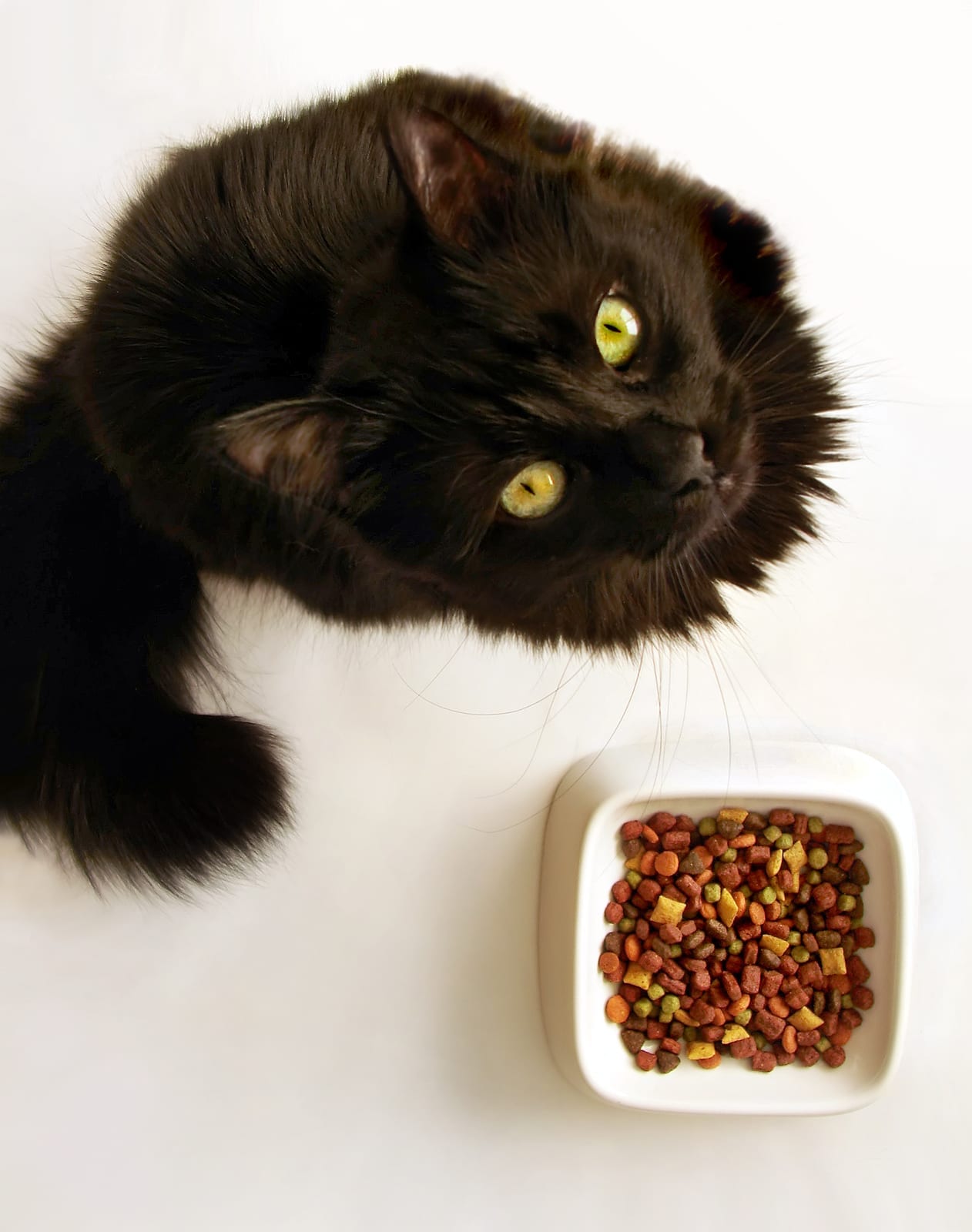
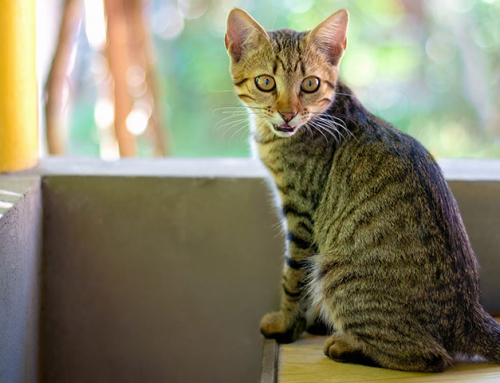
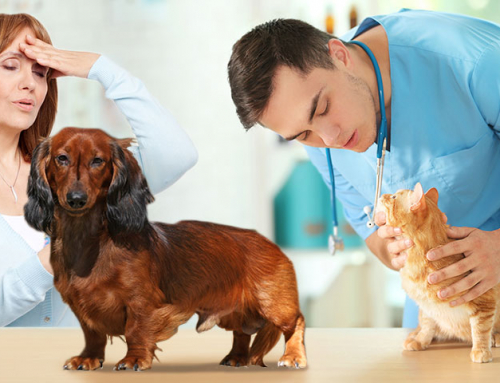
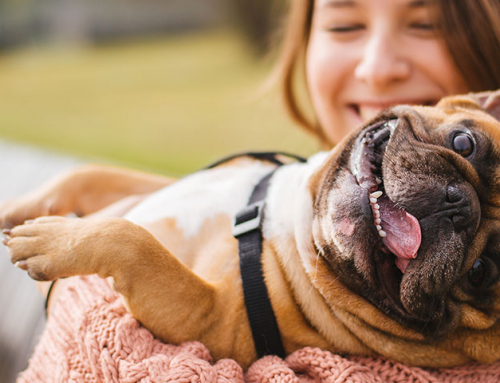
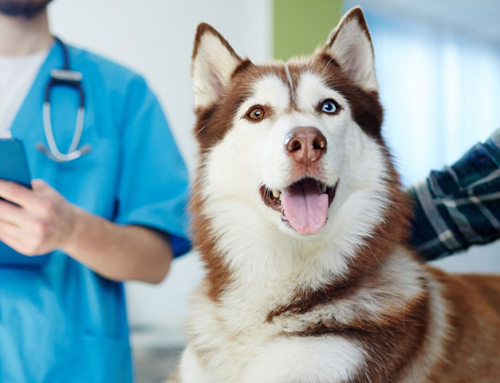
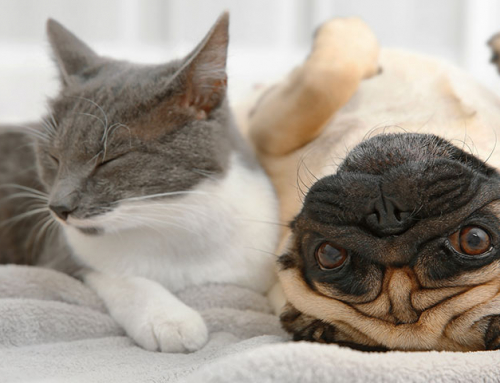

Hi, thank you for all the information! I just started insulin injections with my cat a few days ago. My question is: how long do I give him to eat his food. He is very skinny, and needs to put on weight, but I don’t know how long to let him eat before it disrupts the insulin timeline of every 12 hours. I’ve been taking his remaining food away an hour after his injection. He runs to gobble it up before I take it lol
That sounds like you kitty understands the supply and demand theory! An hour is plenty of time, especially if he’s going to run to gobble it up when you reach for it.
When we feed cats low carb diets (canned foods re much lower in carbs than dry kibble) the impact of in between meals is lessened because they don’t get as much of a glucose spike when eating low carb diets.
Have a chat with your vet who has examined your sweetie.
Hi! Thank you for this great information. My cat was diagnosed 2 weeks ago and was quickly hospitalized for DKA and heart failure. Thanks to great care, he pulled through and is home now. He has a Freestyle Libre tracker and after his first day home has been reading very low after receiving food and insulin 12 hours apart. Should I hold off on an injection if he is below a certain range? I’ve been spending my evenings testing and giving snacks and panicking. I’m thinking it’s either the Libre is reading too low or I should be giving less or no insulin. I’ve emailed my vet and am waiting a response and thought to ask here to due to the thoughtful responses on other posts. Thanks!
Hi there, my dog has just been diagnosed diabetic. She is on a once a day insulin shot with 2/3rds of her calorie intake at the same time. She’s a bit food driven though, so I cannot avoid a treat or two. My question is, and pardon if it’s ignorant, but you don’t know unless you ask … so how does food that is zero on the glycemic index, low in fat but high in protein, cause blood sugar to spike?
No question is ignorant.
Proteins and fats can cause the blood sugar to rise. Simple carbs are more likely to cause a spike than proteins and fats. Complex carbs are less likely to spike the sugar than refined carbs.
Once a day insulin rarely gets a diabetic into glucose control. I’m guessing you are using Vetsulin which has a label for once a day dosing. I’ve never seen a pet regulated with once daily dosing regardless of the FDA label. Typically we split the diet into 2 meals, about 12 hours apart, and give equal doses of insulin at the time of the meal. No 2 pets are the same, and I’ve never examined your pet. Have a chat with your vet about this. If you are new to pet diabetes you might want to read the 2018 AAHA DIABETES GUIDELINES. It’s a great read.
What are the Repercussions of Prednisone/prednisolone being prescribed to a pet that that’s in the early stage of diabetes ?
Will this medicine trigger diabetes occur in a more rapid state?
A vet must have his or her back to the wall to reach for pred with a diabetic pet. Sometimes pred is the only option, but it will worsen glucose control without a doubt. If there is any other option, try that first. Chat with your vet.
Great article! It explained everything I need to know in a way I can understand it , without any contradictions! I (and my dog) really appreciate it!
Thank you. Education is key to a healthy diabetic pet!
Hello, first I just wanted to thank you for the info, it’s been a great help!
Which is a good but affordable glucose meter to buy for my dog?
He’s a 13.5 year old pug who was just diagnosed 2 days ago. I vet checked his glucose numbers and they were in the 500 range. I’m trying to get him down to 2 big meals, 12hrs apart. He usually snacks with us at dinner and right before bed too. He will usually have 3-4 slices of deli turkey and a couple treats.
But yes, which testing kit is good, but yet still affordable?
My favorite by far is the Alphatrak meter. It is calibrated for dogs and cats sor accuracy. And it requires the teeniest little droplet of blood which is very helpful for our smaller patients. The strips maybe more than what you’d pay for some other strips (and certain,y for human strips/meters), but the improved accuracy and ease of use is worth it.
Do be sure to google the 2018 AAHA DIABETES GUIDELINES which area must read for new diabetic pet parents.
Hi.
My 10 year old kitty was just diagnosed and is put on 1 unit of insulin to start and see how it goes. I give her breakfast at 7am and usually dinner at 5 but now I’m making her wait until 7pm to adhere to the 12 hour standard and she is not having it! She is very food motivated. Is it ok to giver dinner around 6 and the injection at 7 or is it very important to make sure the shot happens at the time of feeding? I know thats optimal to do it that way but she is screaming at me.
I understand the feeling of “When kitty ain’t happy ain’t nobody happy.” Nonetheless, it really does improve regulation to give doses 12 hours apart and give the insulin with the meal rather than wait. Feeding cats a low carb meal may help with satiety and does lower blood glucose spikes compared to kibble/dry food. I hope you are feeding her canned only. There are 3 Veterinary diets made specifically for diabetic felines.
Hello, I was wondering when’s the best time to give my diabetic dog her insulin after eating. I know she needs to have insulin after eating, however, my dog normally uses the bathroom after she eats. My question is, if she eats then goes out to potty, is it okay for me to give her insulin after she does her business? If she was to be given insulin then decides to potty right after, will the insulin still work normally, or will it be out of her system since she just used the bathroom? Also, if she poops right after eating, will there still be food in her system so I can give her the insulin? Please get back to me as soon as possible, thank you.
Yes, you can give the insulin after she poops. However, if she is a good eater you might consider giving the insulin as she dives into the food bowl rather than waiting til she has gone outside and done her business. What she defecates is food from a prior meal.
If you are checking a dogs glucose right before meal to determine if they need insulin and glucose is too low (so you don’t give insulin,) what happens when you realize that within just 15 to 20 minutes AFTER eating their glucose numbers came up into a safe range for insulin. Is it still safe with a higher reading 15 minutes after to give the dose, or if they are too low right before meal, they simply cannot get any insulin dose?
This is a question you should ask your vet who has examined your pet. You and your vet might sort a sliding scale for how much insulin to give when the numbers are lower than usual.
Hi,
Thank you for this information. My dog was recently diagnosed with diabetes. He does not eat every twelve hours. The vet originally said to give him insulin right after his meals, but didn’t specify they had to be every twelve hours. I modified his feed times to 8:30 a.m. and 6:00 p.m., but by 5 pm he is already looking for food. I make him wait until at least 6:00 p.m. before feeding him to try to give him the insulin as close to every 12 hours as possible, but I have noticed he is shaking and anxious by 5:00- 5:30 p.m.. Will this cause any problems? Do his injections absolutely have to be 12 hrs. Apart? Thank you for your response.
If he is shaking you might want to check his glucose at that time to make sure he isn’t hypoglycemic.
Best control is typically achieved when insulin and meals are given 12 hours apart, equal meal portions and equal insulin doses. However, if your pet’s glucose numbers aren’t predictable,you may need to check the blood glucose levels more often. Have you done a curve to see how his numbers are? Please do home testing and share the numbers with your vet. You might want to google the 2018 AAHA Diabetes Guidelines. Is
Still a great read.
Hi – my 14 year old Boston terrier was just diagnosed yesterday with diabetes. This is all new to me. My doctor told me that he had to have his shots 12 hours apart. Would it be a problem if I went from 11hrs and next one is 12hrs?
It’s best if you can treat every 12 with equal doses of insulin and equally portioned meals. However, life isn’t always perfect if your work schedule just can’t accommodate that. If you are new to diabetes you might read the 2018 AAHA Diabetes Guidelines which are readily found online. These are the most current AAHA recommendations for pet diabetes. You can also find great diabetes information about pet diabetes on veterinarypartner.com.
Hi, can you please give me advice how to slowly change food intake of my cat?
I have two 10 year old cats (both males, both castrated) one got diagnosed with diabetes. The issue is that until now I fed them one pouch of wet food each for the night. And they had dry food accessible all day (water too of course). But now I need to feed the diabetes cat twice a day…the issue is that they never fully eat the whole meal. They keep it whole night and sometimes they even finish it next day. So my question is how to ease them into taking their full intake of food for only twice a day. Any ideas please? (sorry for my English 🙂 )
Cats do like to nibble. And yet, when the pet is diabetic it is better to get the majority of calories when the insulin is given.
If you feed a low carb diet, there is less of a blood glucose spike if the pet eats between insulin injections. Canned food is lower in carbohydrates than dry food…usually significantly. For that reason we strongly advise canned food only for diabetic cats. They do make a. Pup,e low carb dry foods, but they are still higher in carbs than dry food.
Your cats might
Refer to nibble all day, but if they are given 2 meals a day they will learn to eat well during those meals, especially if the chow is picked up between meals. Cats are smart afterall. I don’t think a transition is particularly necessary to change the feeding pattern in this situation. They will likely figure it out quickly. They may have a few words (or meows) about it…
Hi and thanks for taking my question. My 9 year old lab was diagnosed December 2020. My vet told me to wait 30 minutes after she ate to administer her insulin. But everything I read says it should be administered right after she eats. She eats right about 12 hours apart everyday and she has the exact same balanced meal each time. Should I continue to wait 30 minutes? It seems to me that would just allow her sugar levels to rise. Your response would greatly be appreciated.
Thanks,
Susan
For food motivated diabetic pets (and most labs are food motivated) I prefer giving the insulin as the pet dives into the meal. 🙂
Hi!
My cat is 10 years old and has been diabetic since 2016. Last year in december she had 3 incident with hypoglycemia, one which almost killed her. After consulting with the vet we switched from 3 IE on insulatard to 1,5 IE of prozinc. This was the second day in february. Reason for the switch was that 3 IE on insulatard was way too much, 1 IE way too little, even 2 IE gave her hypoglycemia after a few days. To be able to give her 1,5 IE we had to change the insulin.
Now, after two weeks on prozinc her blood sugar levels are still not stable. It can be around 16 mmol/l in the evening, than higher on the peaks, and then drop to 6 mmol/l in the morning when the next insulin injection is. And sometimes it has a okay curve with high, lower and high again when the injection is due. On insulatard the blood sugar seemed much more stable.
So I was wondering, is it still too soon to expect a stable blood sugar curve after just two weeks? Should I try lantus (read many people has better experience with lantus)? And also, the vet says I have to give my cat the exact same IE morning and night, but I read about others that gives their cat lower insulin doses in the night vs the morning. What are your thoughts about this?
I’m a Lantus fan for kitties, but frankly, prozinc wotks great for cats as well. 2 weeks is a bit early to throw in the towel on prozinc.
Are you feeding low carb, canned food only? That by itself is my best til for regulating a cat.
Have a chat with your veterinarian and do home a blood glucose curve to show your vet.
Best,
Joi
I have rescue cat who has always been big. (like a little oak tree) He was 13 pounds when we found him covered with scabies. He went to 20 pounds then lost down to 17 before being diagnosed. Do not know his age but am guessing approx. 4 years old. Took him to vet because of poss. uti since he was so big he couldn’t clean himself. I couldn’t do a very good job of it. Anyway, vet couldn’t get urine from him, then she said his veins were so deep she couldn’t get blood. Finally got enough blood to do a glucose check. His sugar was 639! Oh yes, he had had a bad case of diarea for almost two weeks. Pancreatus?) Diarea is almost gone now. Doc prescribed 2 units 2x per day of Novolin N. Because of a wrong diagnosis on another cat who died from too much insulin, I am only giving him1 to 1 and 1/2 units at a time. I plan to increase to the full dosage within the week and see the vet again. After all of this, I realize I don’t know as much as I thought I did! I don’t know how or where to check his glucose at home. I am also diabetic so I am not unfamiliar. I definitely need so help. Thank you so much.
On our website if you look under articles and search (in the search box) “tips and tricks” you can find an article I wrote a few years ago on tips and tricks for getting a blood sample from yo7r pet. The sock of rice trick is very helpful. I also have a 4 piece article that can be found if yo7 search “back to basics” on our website.
As far as learning about pet diabetes, there is an exhaustive article by the American Animal Hospital Association. Google 2018 AAHA DIABETES GUIDELINES.
Veterinarypartner.com is another trusted website for educational articles for pet owners.
Education is key to a well regulated diabetic pet.
Best,
Joi
If we miss our dog’s insulin dose, how long after he eats is it still safe to dose him?
This is a great question!
Typically I think 2 hours is a good general answer to your question, but frankly this is the perfect time to check a blood glucose at home. Home monitoring helps pet owners adjust when you get held up at work or life gets in the way of perfect pet care schedules.
Chat with your vet who has examined your pet. You might lower the dosage or skip the dose depending on the blood glucose level and how late you are.
Best, Joi
Hi. NPH is a long acting insulin, onset 1-2 hours and peaking 6-8 hrs, lasting 12 hours so I understand the timing of insulin but not the meals. Since its not a fast acting insulin used to cover meals why isnt it best to feed 8 hours after nph was given while at its peak for better blood glucose control? This instead of feeding every 12 hours with injection when its at its lowest and wont start to work for 1-2 hours after, peaking 6-8 hours. Wouldnt a schedule such as 8 am. NPH insulin, feed 8:30 feed again at peak 4:30 NPH insulin at 8:30 pm.
Insulin duration depends on the pet. Some pets metabolize if more quickly and some pets metabolize it more slowly. This is why we do curves and try to stay consistent. (It would be great if we could just choose a dose and stick with it, but it doesn’t work that way. Some pets still produce some insulin, others produce none.)
NPH is an intermediate acting 8 insulin. When I think of long acting insulin for dogs I think Levemir.
Whether intermediate or long acting insulin is used, we want to feed at the time of the insulin injection to minimize the risk of hypoglycemia (if it was given on an empty stomach).
Have a chat with your veterinarian. 🙂
Please advise. My cat is almost 16, and was diagnosed diabetic 15 months ago. She currently is on 3 units of Prozinc. I switched vets and the new vet prefers Vestulin. It has been a challenge to regulate her, as all curves done show a big drop about 4 hours after insulin. She is fed at the same AM and PM time, 12 hours a part, and I keep a detailed chart on all her eating, insulin, bowel and urine, napping, etc. And, I do occasional curves. The first vet said it was okay to give her extra food just before the LOW period. The second vet said not to. She likes to nibble during the day, however, so the new vet said to give her no more than 1/8 cup of dry food between meals. She is on Purina DM canned and dry, so she gets a bit of both, or whichever she favors most, at mealtime, and 1/8 cup during the day. I also sprinkle some dehydrated raw protein on top to entice her to eat enough, and when I know she is eating good I inject her while eating after she has had a good bit.
My problem is that because of the lows (though she show no signs of hypoglycemia), she will meow and go to her dish and water fountain starting about an hour after eating in the AM for about 3 hours, wanting the extra dry DM I put out (1/8)..
I feel that perhaps if she got less insulin in the AM than PM she would not crave that extra food as much, with the meowing (which she never used to do), and that if she got less insulin AM and didn’t eat as much extra food, her PM reading would not be as high..
Can I give her a lower dosage in the AM vs PM?
Her Vet seems to believe the experience he has had with other cats over the years must apply to her, but the curve he wants of glucose being 120-180 most of the day just doesn’t happen. She still has the significant dip. Actually he had her on 4 units and I decreased to 3 because I told him her reading went down to 49! He said if she didn’t exhibit clinical signs it was okay, but I am not comfortable with 49!!!! She has in the past had readings of 59, but anything below 60 is frightening. P.S. the new vet did not like the idea of sprinkling the dehydrated raw chicken or tuna protein on her food, but she was used to over the counter food at a variety, so this was my solution to get her to eat.
#1 are different doses AM vs PM okay?
#2 is Vestulin better at readings being more of a slight curve?
#3 new vet old me NOT to do spot readings, just curves, but when she meows so loud in the AM after feeding/insulin I sometimes check to make sure its not too low, so hopefully that is okay to do… I try to follow rules, but I am the one with her all day.
Have you considered stopping the dry DM and using canned only? The dry DM is lower in carbs than many dry dry foods, but it’s still significantly higher in carbs than canned food. If you had her on canned food only I suspect you’d find better regulation. Diabetic cats do better on low carb diets.
I y prefer prozinc and Lantus in cats over Vetsulin. Regardless of which insulin, canned food only (no kibble) will likely improve your cat’s glucose numbers.
Curves are best, but of course spot checks are fine if you worry about a low glucose.
60 is too low. A pet can seizure if the glucose gets down to 30. The most common sign of hypoglycemia is no sign at all.
Before you change insulin types, why don’t you first try canned DM without the dry. You may need to drop the insulin dose when you stop the kibble. It sounds like you probably need to drop the insulin dose regardless if your kitty is experiencing hypoglycemia. Or have a chat with your veterinarians as I’ve never examined your pet.
Best, Joi
Hi Dr. Sutton,
My 17 year old cat was diagnosed with Diabetes 3 years ago in July. He has been on Vetsulin this whole time and in remission twice with one lasting time lasting 9 months. In October of last year he was back on the juice due to a kidney infection and has been on it since. He is a Himalayan/Persian/Siamese mix so he is a big cat. His weight went from 17lbs before diagnosis to 9lbs at the time of diagnosis and now at a good weight of 13lbs. He gets fed a can or two of fancy feast high protein food 2x a day with home testing and usually between 1-2 units of insulin. Recently he was having spikes to 350 but a vet visit showed perfect blood work so there is no infection causing it. None of the vets here are real great at managing diabetes in cats so everything I’ve learned has been from vets in forums. The 3 vets here don’t like us testing at home ?♀️ Which I think is just a death sentence to NOT test at home. So at the last visit he was slightly dehydrated so we did the IV hydrate bag at home for 5 days but it didn’t help regulate or lower his numbers. Now we think the Vetsulin is just not working for him anymore. She wants me to use Lantus so I’m going to get it today. However she wants me to just give him 2 units 2x a day for a couple weeks. This doesn’t sound right to me. If Lantus is stronger and longer lasting than Vetsulin shouldn’t we start at a lower dose and do a curve for a couple of days? How do I go about switching him safely to this insulin without damaging his kidneys?
He is my bottle fed baby and I raised his parents so he is kind of special to me.
Thank you for taking the time to respond to everyone.
I typically start with one unit twice daily on Lantus. And I’d do a curve in 5 to 7 days after the switch. Of course, spot checks are fine if anything seems suspicious. I don’t know that Lantus is stronger per se, but it is longer lasting than Vetsulin. I prefer Lantus over Vetsulin for kitties.
I agree with you that home testing is critical.
Did they look for other sources of insulin resistance such as dental disease or a UTI? I suggest urine cultures for diabetic pets at least twice yearly. I try to save my clients money by playing the urine in house in an incubator in my hospital lab so it’s not so pricey for clients. Urine (for diabetic pets) is a cozy place for bacteria to grow.
If you feel you wish further investigation, you might also consider seeing an internist. Most large cities have vet internists. You could ask your vet for a referral.
Keep up the good work.
Good morning, our 6 yr old lab was diagnosed with diabetes in June 2020, She about 65 lbs. She eats well, breakfast at 8:30, insulin at 9am, lunch/snack at 1pm, dinner at 6pm, insulin at 9pm with a diabetic treat. I test urine 2-3 times a day and she appears to be fairly well regulated within the light browns on the diastix. From time to time her urine tests neg., at which time i give a little Karo and get her right back on track. I prefer her urine test to be greenish-brown on the diastix. Last month, our vet did a test that confirmed she was fair to good regulated. This morning at 8am she tested bluish green, she was active and tail wagging, she ate her normal breakfast so i lowered the insulin by one unit to 9.
I have been told giving her insulin without food at 9pm can cause problems, however, when i feed her late in the evening, she vomits.
Would you suggest we Should we be doing something different ?
Is it possible for you to feed your dog earlier in the day so you could feed Andrew give insulin at the same time, 12 hours apart? That would likely 8mprove the blood glucose regulation significantly.
As far as urine glucose testing… it’s not nearly as good as blood glucose testing. In dogs and cats the threshold for glucose spilling into the urine is higher than in people. Dogs may have glucose in the urine around 180 to 200 mg/dL. Cats have been reported to spill glucose into their pee from 200 to 290 mg/dL blood glucose. So if you give Karo each time your dog’s pee strip is negative you aren’t doing him any favors. I’d love for you to chat with your veterinarian about home blood glucose testing! Additionally, home testing can save you a lot of money in glucose curves. Glucose curves are typically more accurate when done at home as there isn’t stress hyperglycemia from being in the vet clinic all day.
Best, Joi
How much food should a cat eat at one sitting before giving Insulin?
My Cat has never been a great eater and now we have changed her food to diabetic food she likes that even less. So I’m always worried about how much she eats. We feed her twice a day 7am and 6pm. and I leave her food down for 2 hrs.
We do not check her levels at home she is a senior rescue cat (11Years old when we got her) we have had her three years now, and does not like to take ANY Meds and doesn’t like her insulin injections and tries to hide, I know she would not let me take her levels. So how much food is ok before Insulin?
Diabetic cat has 5 units insulin in morning and 4 at nite. Vet changed it to 5 at nite 2 days ago. He will not eat tonite. The vet is closed til tomorrow. Can I miss his insulin tonite. He’s not as perky as usual since insulin raised. I’m a wreck. What to do
Dr. Sutton,
My energetic 9.5 year-old min pin, Zo, was diagnosed with diabetes almost 1 month ago. It’s been an emotional roller coaster filled with significantly more lows than highs; his sugars were, of course, the opposite. I had a dog growing up with diabetes who ended up wasting away until he died months later. He was a skeleton and had no energy. I did not want that to be Zo’s fate so I searched the internet like a mad woman to educate myself on canine diabetes. I read AAHA guidelines, searched pubmed, and read blogs. It was encouraging to hear so many success stories in which their pet’s sugars were adequately managed.
For the first couple of days while waiting for my vet to receive the Vetsulin, I was a nervous wreck. As a human doctor, I’m all too familiar with diabetes and the long and short term effects and complications, namely DKA. He was already in a ketotic state and it was crazy for me why we wouldn’t start another insulin – something they had on hand or something that was readily accessible. My vet was worried about starting something for a couple days and having to switch to Vetsulin and how that would affect his response to treatment/his glucose curve.
Perhaps I should have been more persistent, because Zo ended up not responding adequately to Vetsulin, which I had been giving him at 1mg BID for 2 weeks prior to getting the glucometer placed atop his skin. Zo’s vet informed me that he had continued losing weight despite initiating therapy. I knew it was not user error on my part; and the vet didn’t suggest any changes to the dose.
Zo’s sugars were sky high the afternoon and evening after it was placed, registering as >500 at its peak and mid 300’s at its lowest. The same was true for the following day. I then decided to increase the dose to 2 units BID and gave it ~2 days before calling the vet again because his numbers had not budged. He was above 300 >95% of the time. I called the vet clinic and they told me to give it at least a few more days on the higher dose (2 units BID) before we talked about increasing further. By this time, I had found this forum and read your suggestions about levemir. I suggested it, and was told once again about the concern of hypoglycemia and that the manufacturer recommended giving it ~10-14 days before increasing the dose. I understand the algorithm from the AAHA suggests the same, but I could not for the life of me understand how anyone could do that when the sugars were not dropping. I know we treat humans and pets differently but we are definitely more aggressive in treating a patient with ketosis. it doesn’t happen often (thankfully) but if a human patient weren’t responding to a particular insulin therapy we would adjust the dose or switch formulations quickly. I couldn’t let my dog continue to suffer so I did something I tell my patients not to do – I took things into my own hands and continued to increase his Vetsulin dose incrementally based on the numbers I was getting. Meanwhile, I was persistent in advocating for Zo. I even forwarded this blog to my vet and explained my rationale for wanting to switch to a long acting insulin (or just another insulin in general).
Eventually my vet conceded and 2 days ago, Zo started Levemir. I started 1 unit BID as recommended from my vet, but ran into the same issue – no appreciable budge in his blood sugar after 24 hours – he was maintaining in the high 300’s-mid 400s, occasionally shooting into the >500 range. Again, I took things into my own hands and increased the dose to 2U BID and informed my vet regarding the change and showed him Zo’s glucose curve. He agreed that this was a reasonable decision.
Over the last week, Zo has lost his sight and I’ve been incredibly sad for him. I realize that he’s adapted to it better than me and sight isn’t a huge deal to dogs, but it’s still sad and I see he’s lost a bit of his spark. I’ve been trying to cheer him on and build his confidence but it’s hard when I’ve felt so helpless.
It’s been 24 hours since I increased his dose to 2units BID, and this is the first time his sugars have been in the 100s. I don’t feel like we’re out of the woods yet, but this is the first time I’ve seen some light at the end of the tunnel.
All this is a very lengthy way of saying thank you. Thank you for offering advice and recommendations based on guidelines, scientific evidence, and your own professional experience. My vet and the other vets at the clinic have limited experience with canine diabetes. Not that this is good or bad, but it is what it is. This was the first time he used Vetsulin and the first time he’s prescribed Levemir. If it wasn’t for this website, your articles, and responses to these posts, I don’t know if I would have advocated as much as I did to switch insulin formulations. I am so grateful for your help. You’re doing great work.
My dog was diagnosed with diabetes a few days ago. We’re on a 12 hour feeding schedule. Previously she had her second meal after 8.5 hrs. Can the time be shortened?
Dave (and Twiggy)
Insulin injections could overlap and cause hypoglycemia, so we don’t recommend injections so close together.
As you are new to diabetes you might consider reading the 2018 AAHA Diabetic Guidelines. They are available for free on the internet.
I’m changing my rottweilers food, we’ve been having issues getting ‘fresh’ hills science diet, more than half the bags smell rotten.
So I’m switching to american journey, hoping it’ll be better, I’m transitioning the food slowly. But I can’t do a cure as it causes seizures, so I’m wondering how long do I wait after feeding her and giving her 14.5 units of 70\30 to check her b. G, im thinking 30 minutes?